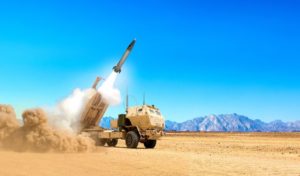Lockheed Martin [LMT] on Wednesday conducted the farthest test shot yet of the Army’s new Precision Strike Missile (PrSM), reaching a range of 400 kilometers during a demonstration at White Sands Missile Range in New Mexico.
The fourth successful PrSM flight test will be followed by a maximum range test shot above 499 kilometers this fall at Vandenberg Air Force Base in California and the first side-by-side missile firing at the Army’s next Project Convergence demonstration at Yuma Proving Ground in Arizona.

“PrSM was fired from a HIMARS launcher and it flew with the expected precision to the target area where it once again demonstrated a highly-accurate and effective warhead event,” Gaylia Campbell, vice president of precision fires at Lockheed Martin Missiles and Fire Control, told reporters following the demonstration. “PrSM’s impressive performance today reflects the dedication of the joint industry PrSM team to advance this capability with speed, efficiency and precision.”
The Army awarded Lockheed Martin a $180.7 million contract last June for the PrSM Enhanced Technical Maturation and Risk Reduction (ETMRR) phase, which followed three successful flight tests, with the contract covering the build of four missiles, three more demonstrations and subsystem qualification work (Defense Daily, June 17 2020).
Campbell said the company still expects a Milestone B decision for PrSM from the Army this summer before the award of a production contract for an Early Operational Capability set of missiles in the second half of this year.
Brig. Gen. John Rafferty, director of the Long Range Precision Fires Cross-Functional Team, told Defense Daily earlier this year it’s critical to begin building the initial set of PrSM missiles this year in order to meet the 2023 delivery date (Defense Daily, Feb. 10).
The Army has said previously the initial PrSM base missile, which will replace the legacy ATACMS weapon, is set to reach ranges out past 500 kilometers, while subsequent technology spirals will push to ranges of 700 to 800 kilometers.